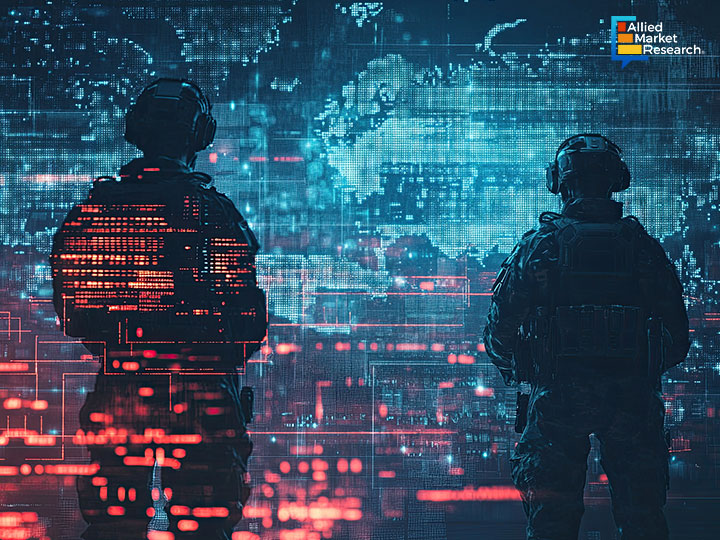Cyber Defense in the Military: The Role of Advanced Cybersecurity Tools and Skilled Personnel

9 Jul
2025
Highlights:
- Introduction
- Advanced Tools for Military Use
- Layered and Real-Time Defense Strategies
Cybersecurity in the military has become a highly technical and sensitive area of defense operations. With constant cyber intrusions targeting national defense systems, there is growing emphasis on building strong digital protection using advanced tools and skilled professionals. Rather than focusing on broad industry trends, it is essential to look at the specific solutions and strategies being used to protect military systems.
Growing Dependence on Advanced Cyber Tools
Modern military operations depend heavily on interconnected digital platforms. From battlefield communication networks to satellite links and drone navigation, the military now runs on a digital core. With this scenario on board, the tools built to defend these systems are becoming just as advanced as the systems they protect. Cybersecurity tools designed for military use are not the same as those used in civilian sectors. They need to be able to detect threats at an early stage, stop breaches in real time, and operate in environments with poor connectivity and limited visibility.
For example, intrusion detection systems used by the military are often designed with machine learning algorithms that recognize patterns of behavior rather than just matching known threats. These systems can work with very limited data, which is important when dealing with classified information that cannot be shared or stored broadly. Encryption tools also go beyond traditional firewalls, with specialized hardware-based encryption techniques being used to keep highly sensitive information secure even if a device is physically captured.
Tools are also being developed to run in isolated or “air-gapped” environments. These systems cannot connect to the internet or outside networks, making them harder to breach but also more difficult to update. Military-focused cybersecurity platforms should be able to deliver updates and monitor these isolated systems without compromising their security posture.
Cybersecurity Breaches Are Becoming More Targeted
Recent reports show that cyber attacks on defense systems are becoming more focused and sophisticated. In an incident that came to light in June 2024, the International Criminal Court (ICC) revealed it had been the target of a highly targeted cyber breach. Though not a military body, the ICC deals with global justice, including war crimes. The attackers, according to a detailed investigation, used advanced tools to maintain access and move within the system over a long period.
This case makes us tact think about the fact that how cyber threats are no longer always about quick attacks or stealing data in bulk. Instead, they are often quiet and persistent, with the attackers waiting for the right moment to collect information or take down systems. For military systems, this requires cybersecurity platforms to constantly monitor for subtle changes and hidden threats.
Veterans Offer a Strong Talent Pipeline with the Right Support
Tools alone cannot protect military networks. Skilled professionals play an equally important role in keeping digital defenses strong. One growing source of cybersecurity talent is military veterans. Many veterans leave service with a strong understanding of discipline, security operations, and technical skills. This makes them well-suited for cybersecurity roles, especially those tied to national defense.
However, a recent article from CSO Online points out that veterans often face challenges when trying to shift into civilian cybersecurity jobs. Even though they have the right mindset and experience, they often lack certifications or familiarity with civilian job language. Programs that offer tailored training and mentorship are helping veterans make the transition successfully.
Some training initiatives focus on bridging this gap by translating military experience into the specific skills needed for modern cyber defense roles. These programs also help veterans understand how their experience applies in practical scenarios, such as responding to ransomware or managing cloud-based defense tools.
In many cases, veterans have already worked on sensitive communications platforms or secure command centers while in service. With the right support, they can take on roles in incident response, penetration testing, or cybersecurity policy development. Defense contractors and military branches are starting to realize the value of this approach and are investing in programs to retain talent that already understands national security. According to Allied Market Research, the military cybersecurity industry accounted for $15.7 billion in 2023 and is expected to reach $68.5 billion by 2033, citing a CAGR of 15.4% during 2024-2033.
A Layered Approach to Defense
The nature of cyber threats today requires a layered defense strategy. Military cybersecurity is no longer about setting up a strong wall and hoping it holds. Instead, systems have to be designed to detect, respond, and recover from breaches quickly.
A layered approach includes combining multiple tools that work at different levels of the system. For instance, endpoint security tools protect individual devices while network monitoring systems keep an eye on larger traffic flows. At the same time, identity management tools ensure that only authorized personnel can access certain systems.
Many of these tools now work together using centralized control panels, where analysts can see threat information in one place. This helps speed up response time and reduce the chances of human error. In a military environment where decisions need to be made quickly and without room for failure, this level of integration is highly important.
Cyber defense tools used by the military should also be tested regularly. Unlike civilian systems, defense platforms are constantly targeted by adversaries who often have access to similar technology. This makes regular simulations, called red team exercises, essential to test how strong the system really is. These exercises copy real-world attacks and help improve tools based on practical results, not just theory.
The Crux
Cybersecurity in the military is more than a technical task; it is a core part of national defense. The combination of advanced cybersecurity tools, human expertise, and continuous updates is the only way to protect highly sensitive defense systems from modern threats. With breaches growing more targeted and silent, the tools used need to be smarter, faster, and more adaptable. Skilled professionals, especially well-supported veterans, alos need to play a significant role in strengthening cyber defense. When combined with other key elements, they help ensure our defenses stay prepared, even for threats we can’t yet see.
Reach out to our team of experts for an in-depth understanding of how the military cybersecurity industry is rolling.

Koyel Ghosh
Author’s Bio- Koyel Ghosh is a blogger with a strong passion and enjoys writing in miscellaneous domains, as she believes it lets her explore a wide variety of niches. She has an innate interest in creativity and enjoys experimenting with different writing styles. A writer who never stops imagining, she has been serving the corporate industry for the last five years.
Avenue: Entire Library membership of Allied Market Research Reports at your disposal
- Avenue is an innovative subscription-based online report database.
- Avail an online access to the entire library of syndicated reports on more than 2,000 niche industries and company profiles on more than 12,000 firms across 11 domains.
- A cost-effective model tailored for entrepreneurs, investors, and students & researchers at universities.
- Request customizations, suggest new reports, and avail analyst support as per your requirements.
- Get an access to the library of reports at any time from any device and anywhere.
Related Post
-
How are Submarine Cables Transforming Global Connectivity with Enhanced User Experience?
-
Endoscopy Procedures: Transformations in Techniques and Applications
-
AI-Powered Video Analytics: How the Product Actually Works for enterprises
-
Painting Robots: Transforming Precision Coating and Creative Applications
-
Innovations in Pharmacovigilance Systems Advancing Patient Safety
-
Understanding Edge Security: Keeping Data Safe Near the Source
-
Exploring the Use and Advancements of 3D Laser Scanners in Professional Applications
-
Reinforcing Industrial Controls with Smarter Tools and Training








